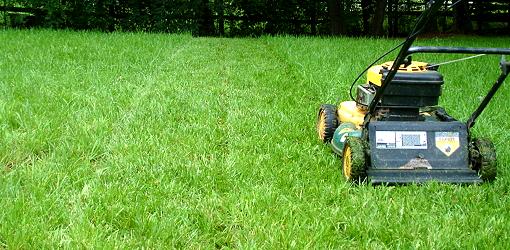Lawn Pesticide Fact Sheets
Alternatives for Safer Lawn Care
Fall is the best time to start transitioning your lawn to organic, as our fall organic lawn care guide and leaf pile factsheet discuss. The key to a healthy lawn is healthy soil and good mowing, watering and fertilizing practices. Healthy soil contains high organic content and is teeming with biological life. Healthy soil supports the development of healthy grass that is naturally resistant to weeds and pests. In a healthy, fertile and well maintained lawn, diseases and pest problems are rare. But doesn’t it cost more you ask? If your lawn is currently chemically‐dependent, initially it may be more expensive to restore the biological life. But, in the long term, it will actually cost you less money. Once established, an organic lawn uses fewer materials, such as water and fertilizers, and requires less labor for mowing and maintenance. More importantly, your lawn will be safe for children, pets and your local drinking water supply.
For springtime weeding problems check out our Simple Guide to Creating a Healthy Lawn as well as the Least Toxic Control of Weeds factsheet which provide tools to deal with harmful weeds around the home and strategies to encourage healthy lawns. There are only 8 steps you need to take to obtain a toxic-free lawn that you can be proud of, check out 8 Steps to a Toxic-Free Lawn. During summertime lawncare the pests are out in full force and you may be at a loss as to how to control them. If you know what pests are plaguing your lawn, our ManageSafe Choose-a-Pest page will provide information on treating chigger, ants, bees, and more.
If all else fails, you can always hire a safe lawn care company and learn about least toxic products that will provide you safe lawns for yourself, your neighbors and family. Safety Source: Identify Least Toxic Products & Lawn Care Companies, is an important resource for those need.
Hazards of Chemical Lawn Care
Studies show that hazardous lawn chemicals are drifting into our homes where they contaminate indoor air and surfaces, exposing children to levels ten times higher than pre-application levels. Of 40 most commonly used lawn pesticides, 26 are linked with cancer or carcinogenicity, 12 are linked with birth defects, 21 with reproductive effects, 32 with liver or kidney damage, 24 with neurotoxicity, and 24 with disruption of the endocrine (hormonal) system.
 Of those same 40 lawn pesticides, 21 are detected in groundwater, 24 have the ability to leach into drinking water sources, 39 are toxic to fish and other aquatic organisms vital to our ecosystem, 33 are toxic to bees, 18 are toxic to mammals, and 28 are toxic to birds. With numbers like this, the only logical question becomes: is this really necessary and what can we do to stop or prevent this kind of contamination?
Of those same 40 lawn pesticides, 21 are detected in groundwater, 24 have the ability to leach into drinking water sources, 39 are toxic to fish and other aquatic organisms vital to our ecosystem, 33 are toxic to bees, 18 are toxic to mammals, and 28 are toxic to birds. With numbers like this, the only logical question becomes: is this really necessary and what can we do to stop or prevent this kind of contamination?
Members of the National Coalition for Pesticide-Free Lawns are working to halt senseless exposure to lawn pesticides and to educate the public, landscapers, and policy makers on the use of non-toxic and least-toxic lawn care practices and products. Change begins at local level. The public plays an extremely important role in lawn pesticide reform – not only in the way it perceives the use of toxic pesticides in homes and communities but also in the way it demands safe alternatives from retailers, organic services from lawn care providers, and better protection from pesticide exposure from local policy makers.
Read more about the hazards of lawn care, their impacts on children, and how to avoid being decieved by organic claims:








